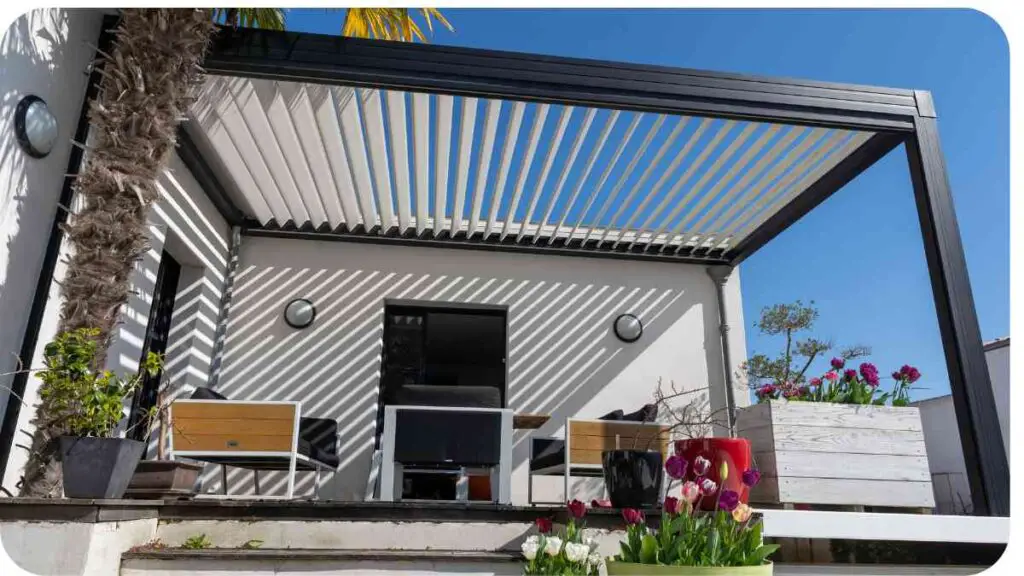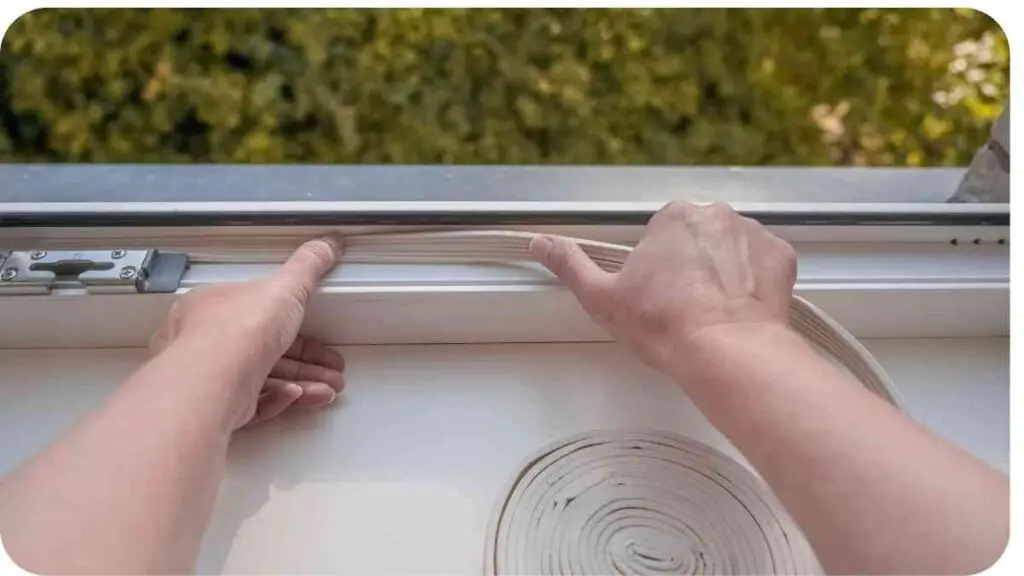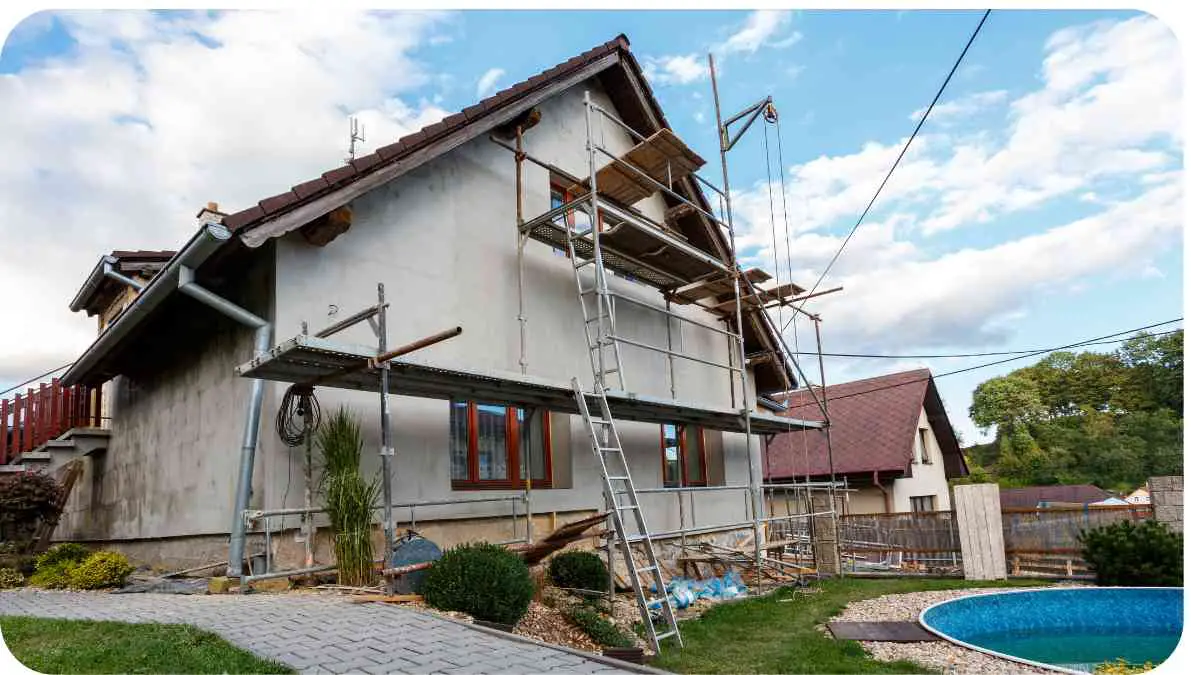Outdoor structures like sheds, fences, and decks add value and functionality to our homes. However, over time, wear and tear can take its toll, leading to common issues that require timely repairs. In this guide, we’ll explore DIY fixes for these common problems, empowering you to maintain and enhance your outdoor spaces with confidence.
| Key Takeaways |
|---|
| 1. Regularly inspect outdoor structures for signs of damage such as leaks, cracks, and rotting wood. |
| 2. Use appropriate tools and materials for each repair, ensuring safety and effectiveness. |
| 3. Address minor repairs promptly to prevent them from escalating into larger, more costly issues. |
| 4. Understand when to tackle repairs yourself and when to seek professional help for complex or extensive damage. |
| 5. Maintain and protect outdoor structures with waterproofing sealants and regular maintenance routines. |
Understanding Your Outdoor Structures

Before diving into repairs, it’s crucial to understand the anatomy of your outdoor structures. Each component from the roof to the foundation serves a specific purpose and requires tailored maintenance. By knowing what to look for and how to address issues, you can prolong the lifespan of these investments.
Proper maintenance is essential for prolonging the life of your outdoor structures. Implementing a routine for year-round care ensures they remain in top condition throughout all seasons, protecting your investment and enhancing the beauty and functionality of your outdoor space.
Tools and Materials You’ll Need
To tackle repairs effectively, gather the following tools and materials:
| Tools | Materials |
|---|---|
| Screwdriver set | Wood filler |
| Hammer | Exterior paint |
| Circular saw | Caulk |
| Level | Deck sealant |
| Power drill | Concrete patch |
| Pliers | Pest repellent |
| Safety gloves and goggles | Weatherproofing sealant |
Inspecting and Identifying Common Issues

Begin your repair journey by conducting a thorough inspection of your outdoor structures. Look for signs of damage such as leaks, cracks, rotting wood, or pest infestations. Identifying these issues early can prevent further deterioration and costly repairs down the road.
As colder months approach, it’s crucial to prepare your outdoor structures to withstand harsh weather. Learn how to make them winter-ready with tips on insulation, material protection, and necessary repairs to avoid damage and ensure longevity.
Repairing a Leaky Roof
A leaking roof can lead to extensive water damage inside your structure. Here’s how to fix it:
| Steps | Details |
|---|---|
| 1. Clean the roof surface | Remove debris and dirt. |
| 2. Locate and seal leaks | Use roofing cement or sealant. |
| 3. Replace damaged shingles | Install new shingles as needed. |
| 4. Check flashing | Ensure it’s secure and intact. |
| 5. Apply a waterproof coating | Protect against future leaks. |
Implementing these steps promptly can safeguard your structure from water infiltration.
Fixing Damaged Siding
Damaged siding not only affects aesthetics but also compromises insulation. Here’s a quick guide to repairing it:
| Steps | Details |
|---|---|
| 1. Remove damaged siding | Use a pry bar to carefully detach the affected pieces. |
| 2. Prepare replacement siding | Cut to size and prime if necessary. |
| 3. Install new siding | Nail in place and seal joints with caulk. |
| 4. Paint or finish | Match the existing color for a seamless look. |
Maintaining uniform siding protects your structure from weather elements and enhances its curb appeal.
Accessibility is a key consideration for outdoor structures, ensuring everyone can enjoy them. Learn how to make your pergola user-friendly with design modifications and features that cater to people of all abilities, promoting inclusivity and comfort in your outdoor living space.
Replacing Rotted Wood
Rotted wood is a common issue, especially in moist environments. Here’s how to address it:
| Steps | Details |
|---|---|
| 1. Remove rotted sections | Use a chisel or saw to cut out damaged wood. |
| 2. Treat with wood preservative | Prevent future decay. |
| 3. Replace with new wood | Ensure a snug fit and secure with screws or nails. |
Replacing rotted wood restores structural integrity and prevents further deterioration.
Repairing Cracked Concrete
Cracked concrete surfaces can be hazardous and unsightly. Follow these steps to repair them:
| Steps | Details |
|---|---|
| 1. Clean and prep | Remove debris and clean the area thoroughly. |
| 2. Apply concrete patch | Fill cracks with a patching compound. |
| 3. Smooth and blend | Use a trowel to level the surface evenly. |
| 4. Seal and cure | Apply a concrete sealer and allow to cure as per manufacturer’s instructions. |
Repairing cracks promptly prevents them from spreading and preserves the structural integrity of your outdoor surfaces.
Dealing with Pests and Infestations
Outdoor structures can attract pests like termites, ants, or rodents, causing structural damage. Here’s how to handle pest issues effectively:
Creating a safe environment for your family involves more than just basic upkeep. Discover how to make kid-proof pergolas by incorporating child-friendly designs and safety features that provide peace of mind while enhancing the usability and enjoyment of your outdoor space.
| Steps | Details |
|---|---|
| 1. Identify the pest | Determine the type of pest and extent of infestation. |
| 2. Use appropriate treatments | Apply pest repellent or traps as needed. |
| 3. Seal entry points | Prevent future access with caulk or wire mesh. |
| 4. Monitor regularly | Check for signs of re-infestation and take preventive measures. |
Protecting your structures from pests ensures longevity and safety for your outdoor spaces.
Restoring Faded Paint and Finishes
Exposure to sun and weather can cause paint and finishes to fade over time. Here’s how to restore them:
| Steps | Details |
|---|---|
| 1. Clean and prep surface | Wash off dirt and debris. |
| 2. Sand and smooth | Use sandpaper to remove rough spots. |
| 3. Apply primer | Prepare the surface for new paint or finish. |
| 4. Apply new paint or finish | Use a brush or roller for even application. |
Refreshing paint and finishes not only enhances aesthetics but also protects against weather damage.
Maintaining and Sealing Joints
Well-maintained joints prevent water infiltration and structural damage. Follow these steps:
| Steps | Details |
|---|---|
| 1. Inspect joints | Check for gaps or cracks in caulking. |
| 2. Remove old caulk | Use a caulk removal tool or knife. |
| 3. Apply new caulk | Use a caulking gun to fill gaps completely. |
| 4. Smooth and blend | Use a wet finger or tool to smooth the caulk. |
Regular maintenance of joints enhances structural integrity and prevents costly repairs.
Weatherproofing and Waterproofing Tips

Protecting outdoor structures from weather elements is essential for longevity. Consider these tips:
| Steps | Details |
|---|---|
| 1. Use weatherproofing sealant | Apply to wood, concrete, or metal surfaces. |
| 2. Install proper drainage | Ensure water drains away from the structure. |
| 3. Cover vulnerable areas | Use tarps or covers during harsh weather. |
| 4. Inspect and reapply | Regularly check sealants and reapply as needed. |
Effective weatherproofing extends the life of outdoor structures and reduces maintenance costs.
DIY vs. Professional Help: When to Call in the Experts
While many repairs can be DIY projects, some situations require professional expertise. Here’s when to seek professional help:
| Signs | Considerations |
|---|---|
| Extensive damage | Structural issues may require specialized knowledge. |
| Lack of tools or skills | Certain repairs may require specialized tools or training. |
| Safety concerns | Working at heights or with electrical components. |
Knowing when to call in professionals ensures repairs are done safely and effectively.
Safety Tips and Precautions
When performing outdoor structure repairs, prioritize safety. Follow these essential safety tips:
| Tips | Details |
|---|---|
| Wear protective gear | Use gloves, goggles, and appropriate clothing. |
| Work in daylight | Ensure good visibility for accurate work. |
| Use stable ladders | Secure ladders on level ground to prevent falls. |
| Disconnect power | When working near electrical components. |
| Work with a partner | Have someone nearby for assistance if needed. |
Safety should always be the top priority to prevent accidents and injuries during repairs.
Eco-conscious homeowners are increasingly opting for sustainable options in their outdoor designs. Explore eco-friendly options for pergolas and gazebos that use renewable materials and energy-efficient practices, contributing to a greener planet while maintaining style and functionality.
Conclusion
Maintaining outdoor structures through timely repairs not only enhances their appearance but also prolongs their lifespan. By following these DIY fixes and maintenance tips, you can ensure your outdoor spaces remain functional and beautiful for years to come.
Further Reading
Here are some additional resources to explore for more insights on outdoor structure repairs:
- Common Fence Problems: This article discusses common issues with fences and offers practical solutions for repairs and maintenance.
- Carpentry Repair: Quick Fixes and Expert Tips: Learn expert tips and quick fixes for various carpentry repairs around your home, including outdoor structures.
- Maintaining Outdoor Structures: Discover essential maintenance practices for outdoor structures to prolong their lifespan and prevent common issues.
FAQs
What are the most common problems with outdoor structures?
Outdoor structures often face issues like roof leaks, rotting wood, cracked concrete, and pest infestations due to exposure to weather elements.
How can I prevent rotting wood in my outdoor structures?
To prevent wood from rotting, ensure proper drainage around the structure, treat wood with preservatives, and regularly inspect and replace any damaged wood.
When should I repaint or refinish outdoor structures?
Repaint or refinish outdoor structures when you notice fading, peeling paint, or signs of weather damage to protect them from further deterioration.
Is it safe to repair my own outdoor structures?
DIY repairs can be safe if you have the necessary skills and use proper safety equipment. For complex or extensive damage, consider consulting a professional.
How often should I inspect my outdoor structures for maintenance?
Regular inspections every few months are recommended to catch minor issues early and prevent costly repairs in the future.
What should I do if I discover a leak in my outdoor structure?
Address leaks promptly by identifying the source, sealing it with appropriate materials like roofing cement, and ensuring proper drainage to prevent future issues.

I am Hellen James, a professional handywoman with expertise in improving home and garden spaces by using pergolas, gazebos, and tents.

